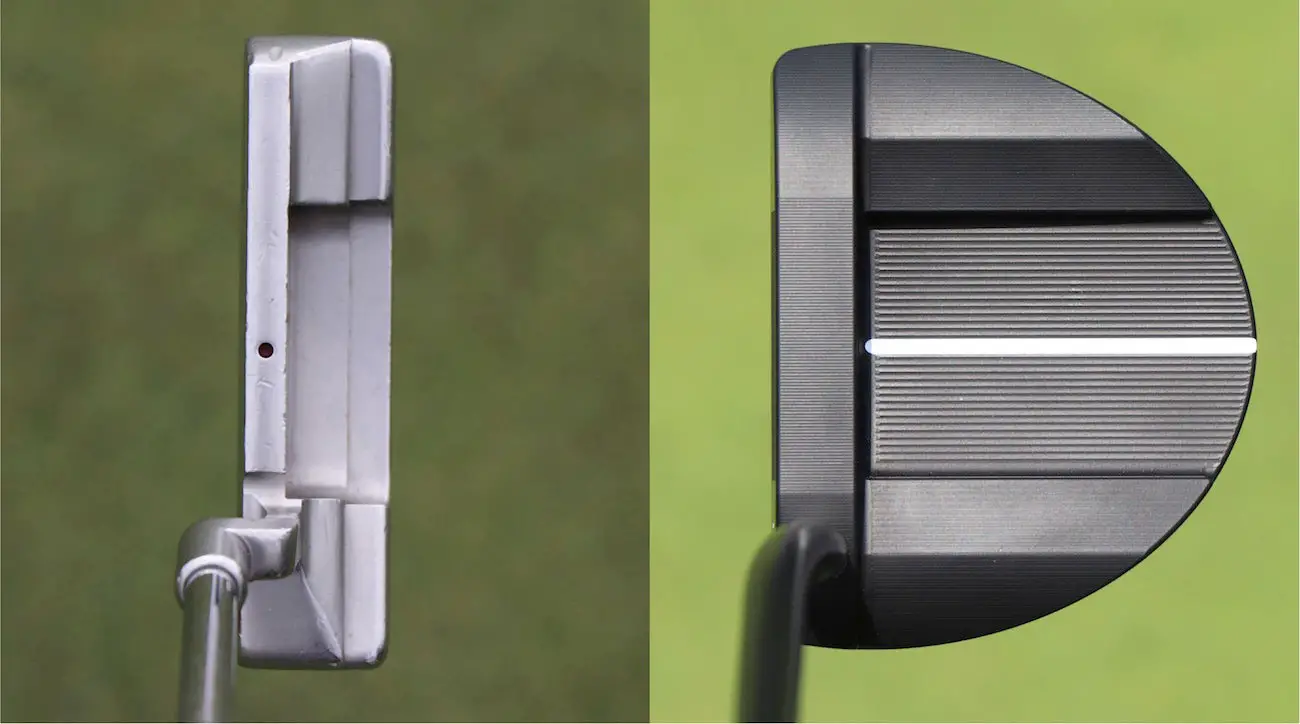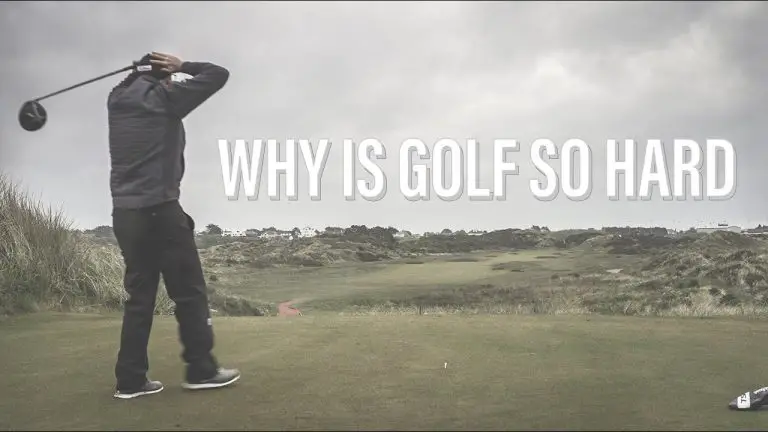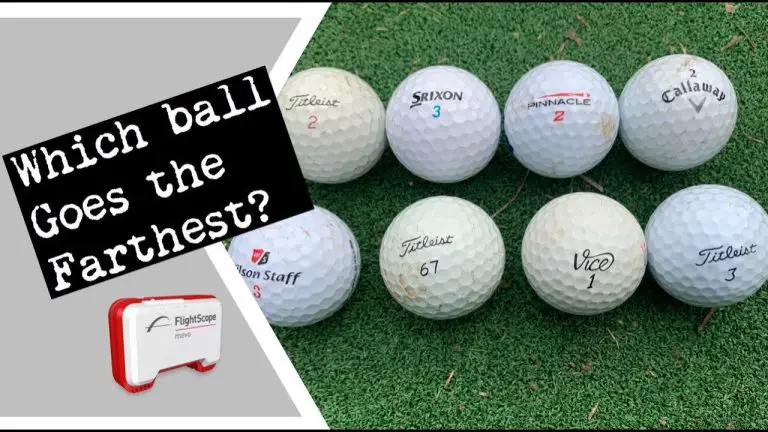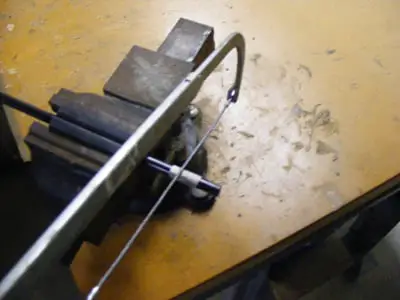What Is A Blade Putter

In the world of golf, the art of putting can often make or break a player’s game. The precision, control, and finesse required to sink those crucial putts demand a putter that aligns with a golfer’s individual style and preferences. Enter the blade putter, a classic and revered tool in the game of golf.
A blade putter is a type of putter known for its sleek and minimalist design, characterized by a thin, compact head shape. It has stood the test of time, earning its place as a favorite among professional golfers and amateurs alike.
In this comprehensive guide, we will delve into the world of blade putters, exploring their defining features, benefits, and the factors that set them apart from other putter types. Whether you’re a seasoned golfer looking to refine your putting skills or a beginner seeking the right equipment to enhance your game, understanding the intricacies of a blade putter is essential.
Join us as we uncover the secrets of this iconic golf club, including its history, key design elements, and the advantages it offers on the greens. Discover why the blade putter remains a trusted and coveted companion for golfers seeking precision, control, and the ultimate putting experience.

What Makes a Putter a Blade Putter?
A blade putter is a type of golf putter that is characterized by its specific design elements and features. Let’s delve into what sets a blade putter apart from other putter types:
Definition and Characteristics of a Blade Putter
A blade putter, as the name suggests, typically features a blade-like head shape. It is known for its thin and compact profile, with a traditional and elegant appearance. The simplicity of its design often appeals to golfers who prefer a classic and minimalist aesthetic.
The blade putter’s design focuses on providing a clean and uninterrupted view of the golf ball at address, allowing golfers to align their putts with precision. This type of putter often incorporates alignment aids such as sightlines or dots on the topline to assist in proper alignment.
Common Materials Used in the Construction of Blade Putters
Blade putters are constructed using a variety of materials, each offering distinct characteristics and feel. The most common materials used in blade putter construction include:
- Carbon Steel: Carbon steel is a popular choice for blade putters due to its soft and responsive feel. It provides excellent feedback on impact and is favored by golfers who prioritize feel and touch in their putting stroke.
- Stainless Steel: Stainless steel is another commonly used material in blade putter construction. It offers durability, a solid feel, and enhanced resistance to corrosion. Stainless steel putters often provide a slightly firmer feel compared to carbon steel models.
- Milled Putters: Milled putters are crafted from a solid block of metal, usually carbon steel or stainless steel. The milling process allows for precise shaping and weight distribution, resulting in a putter with exceptional craftsmanship and consistency.
Why Choose a Blade Putter?
Selecting the right putter is crucial for improving your putting performance, and the blade putter offers several advantages that make it a popular choice among golfers. Let’s explore why you might consider choosing a blade putter for your game:
Enhanced Feel and Feedback
One of the primary reasons golfers opt for a blade putter is the enhanced feel it provides. The blade design, with its thin profile and concentrated weight behind the ball, allows for a greater sense of connection and feedback on impact. Golfers can better gauge the quality of their strikes, leading to improved distance control and consistency.
The precise feedback from a blade putter helps golfers develop a sensitive touch, especially on delicate and short putts. With regular practice and familiarity, golfers can gain a deeper understanding of their stroke and make the necessary adjustments to refine their putting technique.
Improved Accuracy and Precision
Blade putters excel in providing accuracy and precision on the greens. The clean and unobstructed view of the ball at address, combined with the simplicity of the design, promotes proper alignment and reduces visual distractions. Golfers can align the putter and square the face more easily, increasing the likelihood of making accurate and on-target putts.
The compact and maneuverable nature of blade putters allows for better control over the putter head. Golfers can more precisely strike the ball with consistent contact, minimizing off-center hits and their detrimental effects on accuracy. The blade putter’s design lends itself to a more traditional and finesse-based putting stroke, which can be advantageous in certain green conditions and for golfers who prefer a more delicate touch.
Key Features and Design Elements of a Blade Putter
The design of a blade putter encompasses various key features and elements that contribute to its performance on the greens. Understanding these aspects can help you make an informed decision when selecting a blade putter that suits your preferences and playing style.
Blade Putter Head Design
The blade putter is characterized by its thin and compact head profile. The design focuses on weight distribution and balance to enhance control and feel. Some key elements of the blade putter head design include:
- Toe-Heel Weighting: Blade putters often have a balanced weight distribution from the toe to the heel. This design promotes stability and forgiveness on off-center hits, minimizing the negative impact of mishits on distance and accuracy.
- Center of Gravity (CG): The CG location plays a crucial role in the performance of a blade putter. It is typically positioned closer to the face, contributing to a consistent roll and improved feedback. Golfers can expect a more responsive feel and enhanced distance control with a well-designed CG placement.
Putter Face and Insert Technology
The face of a blade putter directly influences the interaction between the putter and the golf ball, impacting feel, sound, and roll. Blade putters may incorporate various face materials and insert technologies to optimize performance:
- Face Material: Blade putters commonly feature a face made of either stainless steel or softer materials like aluminum or copper. Stainless steel faces provide a firmer feel, while softer materials enhance responsiveness and feel at impact.
- Inserts: Some blade putters incorporate inserts into the face design. Inserts can vary in material, such as elastomer or urethane, and are aimed at improving the feel, sound, and roll characteristics of the putter. Inserts can enhance the responsiveness of the face, providing a consistent and pleasing feedback on well-struck putts.
Alignment Aids and Sightlines
Alignment aids are crucial for ensuring proper setup and alignment when addressing the ball. Blade putters may feature various alignment aids and sightlines to assist golfers in positioning the putter correctly:
- Sightlines: Sightlines on the topline of the putter can aid in alignment and promote a square putter face at address. These sightlines can be simple dots, lines, or more intricate patterns, depending on the putter model. Sightlines help golfers establish their desired target line and build confidence in their alignment.
- Aim Lines and Dots: Some blade putters incorporate additional aim lines or dots on the putter head to provide further alignment assistance. These markings can help golfers align the putter face parallel to their intended target line, aiding in accuracy and consistency.
Blade Putter vs. Mallet Putter: Choosing the Right Style
When selecting a putter, you’ll often come across two main categories: blade putters and mallet putters. Understanding the differences between these styles can help you determine the one that suits your game best. Let’s compare blade putters and mallet putters:
Blade Putters
Blade putters, as discussed earlier, are characterized by their traditional, compact head design. They typically have a thin profile and a balanced weight distribution. Some key considerations for blade putters include:
- Suitable Stroke Type: Blade putters are well-suited for golfers with a slight arc in their putting stroke. The more open and flowing stroke path is complemented by the blade’s design, allowing for a smooth and controlled motion.
- Preference for Feel and Feedback: Golfers who prioritize feel and feedback in their putting stroke often gravitate towards blade putters. The blade’s design promotes a heightened sense of connection with the ball, providing precise feedback on strike quality.
Mallet Putters
Mallet putters, on the other hand, have a larger and more forgiving head shape. They often feature perimeter weighting and advanced alignment aids. Consider the following points when evaluating mallet putters:
- Stroke Type Compatibility: Mallet putters are well-suited for golfers with a straight-back, straight-through putting stroke. The larger head size and added stability help to maintain a consistent path throughout the stroke.
- Enhanced Forgiveness: Mallet putters offer increased forgiveness on off-center hits due to their perimeter weighting and higher moment of inertia (MOI). This can help mitigate the negative effects of mishits and promote more consistent results.
- Advanced Alignment Features: Mallet putters often incorporate elaborate alignment aids, such as long sightlines, parallel lines, or large visual elements on the head. These features can assist in proper alignment and build confidence in your setup.
Ultimately, the choice between a blade putter and a mallet putter depends on your stroke type, preference for feel or forgiveness, and alignment needs. It’s recommended to try out both styles and see which one feels more comfortable and inspires confidence in your putting stroke.
Customizing and Fitting a Blade Putter
To maximize your performance with a blade putter, it’s essential to ensure that the putter is customized and fitted to suit your unique preferences and specifications. Let’s explore the importance of customizing and fitting a blade putter:
Importance of Proper Putter Fitting
Putter fitting involves tailoring the putter to your physical attributes, putting stroke, and personal preferences. A well-fitted putter can enhance your ability to make consistent and accurate putts. Key aspects of putter fitting include:
- Length and Lie Angle: The length of the putter should be adjusted to match your setup and posture. A putter that is too long or too short can negatively impact your alignment and stroke mechanics. The lie angle, which determines the angle between the putter shaft and the ground, should also be properly fitted to ensure the putter sole sits flush on the ground during the stroke.
- Grip Selection and Customization: The grip on your blade putter plays a crucial role in your ability to maintain control and feel throughout the stroke. Choosing the right grip size, shape, and material that suits your hand size and grip style is essential. Customizing the grip thickness or adding additional layers can further fine-tune the feel and comfort.
Adjustability Features in Blade Putters
Many modern blade putters offer adjustability features that allow you to fine-tune certain aspects of the putter to suit your preferences. Some common adjustability options include:
- Weighting Options: Blade putters may feature weight ports or removable weights that allow you to adjust the overall weight distribution. By altering the weight placement, you can customize the feel and balance of the putter to match your stroke and desired swing weight.
- Loft Adjustments: Some blade putters offer the ability to adjust the loft angle of the putter face. This allows you to optimize the launch angle and roll characteristics based on your stroke and the green conditions you encounter.
- Toe Hang Adjustments: Blade putters with a hosel design that creates toe hang may provide options to adjust the amount of toe hang. This adjustment can influence the balance and rotation of the putter during the stroke, catering to your stroke type and preference.
Seeking Professional Putter Fitting
For precise customization and fitting of your blade putter, it is recommended to seek the assistance of a professional club fitter or a PGA professional. They have the expertise and tools to analyze your stroke, evaluate your physical attributes, and recommend the optimal specifications for your blade putter.
A professional fitting session can provide valuable insights into your putting stroke mechanics, alignment tendencies, and equipment needs. It ensures that your blade putter is tailored to your game, maximizing your performance on the greens.
Using and Maintaining a Blade Putter
Once you have selected and customized your blade putter, it’s important to know how to effectively use and maintain it to ensure optimal performance and longevity. Here are some tips for using and maintaining your blade putter:
Putting Techniques and Tips
Improving your putting technique is key to making consistent and successful putts. Consider the following techniques and tips to enhance your putting performance with a blade putter:
- Developing a Consistent Putting Stroke: Practice a smooth and pendulum-like putting stroke, maintaining a steady tempo and rhythm. Focus on keeping the blade putter on the intended line throughout the stroke, with the face square to the target at impact.
- Mastering Distance Control: Spend time practicing your distance control by developing a feel for different-length putts. Experiment with varying backswing lengths and tempo to match the desired distance. Consistent distance control is crucial for lag putts and holing out those critical shorter putts.
- Green Reading and Aim Point Technique: Develop your green reading skills to better gauge the break and slope of the greens. Utilize the Aim Point technique or other green reading methods to enhance your ability to read putts accurately and improve your aim and alignment.
Care and Maintenance of a Blade Putter
Proper care and maintenance can help prolong the lifespan and performance of your blade putter. Consider the following guidelines:
- Cleaning: Regularly clean your blade putter to remove dirt, grass, and debris that may accumulate on the head, shaft, and grip. Use a soft cloth or brush to gently wipe the surfaces, and avoid using harsh chemicals that could damage the finish or grip.
- Protecting the Putter Head and Shaft: To prevent scratches and dings, consider using a putter cover when transporting or storing your blade putter. Protecting the head and shaft from unnecessary wear and tear can maintain the aesthetic appeal and integrity of the putter.
- Inspecting and Re-gripping: Periodically inspect the grip for signs of wear, such as smoothness or cracks. A worn-out grip can negatively affect your grip pressure and control. If needed, consider re-gripping the putter to ensure a secure and comfortable hold.
- Storage: Store your blade putter in a cool, dry place, away from extreme temperatures or humidity. Avoid leaning the putter against hard surfaces or other clubs, as this can lead to cosmetic damage or alterations to the loft and lie angles.
By following these care and maintenance practices, you can keep your blade putter in optimal condition and enjoy its performance round after round.
In conclusion, a well-fitted and properly maintained blade putter can be a valuable asset in your golf bag. By mastering your putting technique and taking care of your equipment, you can elevate your performance on the greens and make more confident and successful putts.





